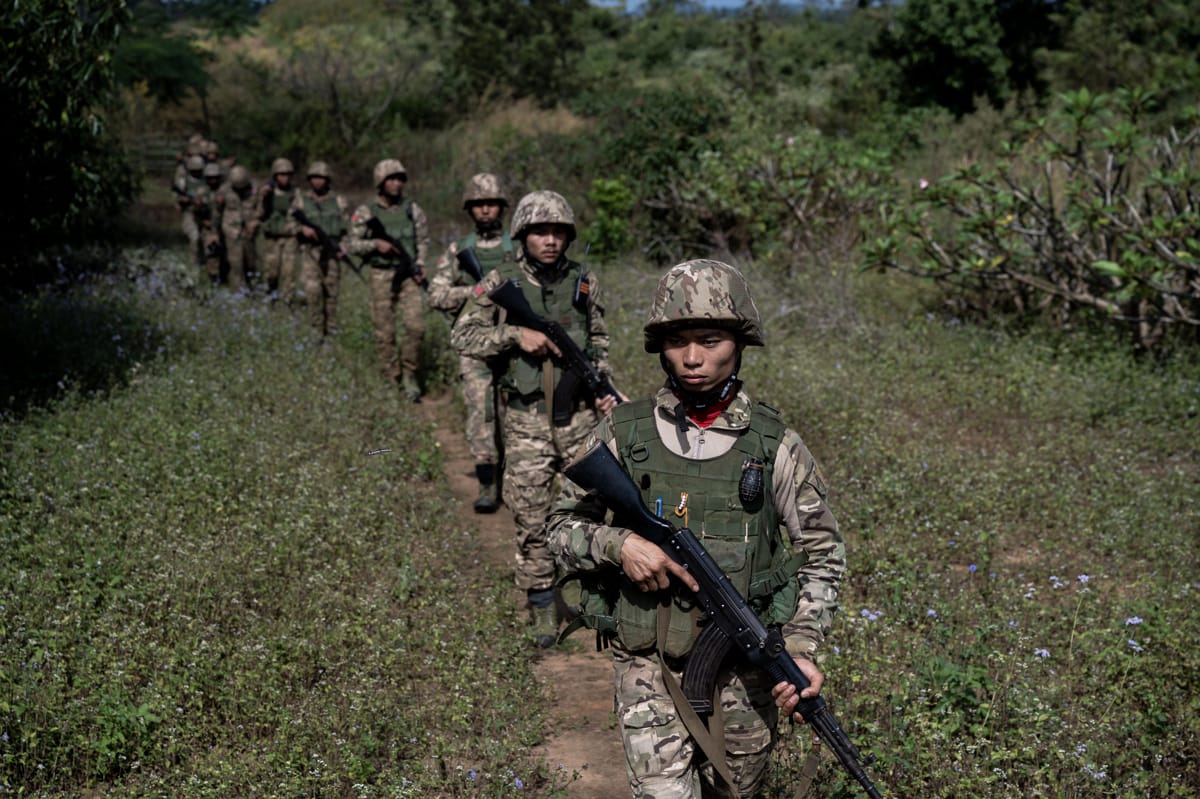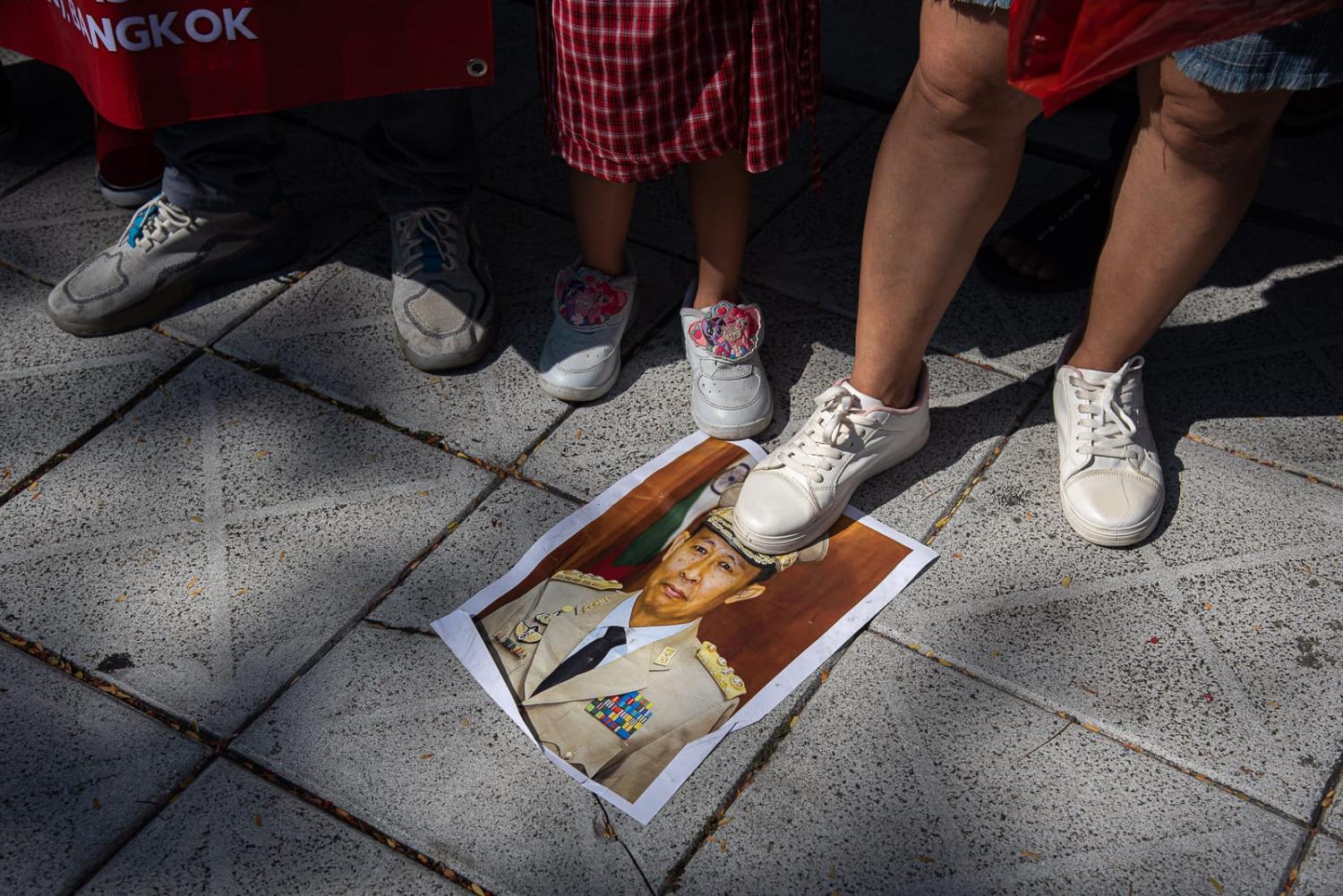On 1 February, it will be three years since Myanmar’s armed forces (known as the Tatmadaw) rejected the National League for Democracy’s 2020 landslide election victory and seized power. The country soon descended into a bitter and costly civil war that shows no signs of ending. Both sides have vowed to fight on until they achieve an outright military victory.
The multi-faceted and hydra-headed opposition movement is divided over many political issues, but in recent months it has managed to reach an unprecedented level of cooperation at the military level. Led by several ethnic armed organisations (EAO), this has resulted in joint and coordinated operations over two thirds of the country, and a string of military successes.
The junta continues to dominate Myanmar’s heavily populated and economically important heartland, but it is facing unprecedented challenges on the battlefield. This could lead, at least in the short term, to an effective loss of control over the country’s outer-lying areas, including some important trade and communications links with India, China and Thailand.
Predictions of the junta’s imminent collapse are premature and misleading. The resilience of the generals should not be underestimated. However, the dramatic developments of the past three months prompt the question: what would the opposition forces need, or need to happen, in order to prevail over the military regime?
As always in Myanmar, there are no simple or easy answers, but some issues stand out as obvious contenders.
First, the diverse groups currently opposing the junta would need to overcome their political differences and agree on a broad platform that describes what Myanmar might look like, and how it might be governed, should the military regime fall. This would not eliminate all the tensions that exist between them, but it would give them a common goal to strive for, beyond the defeat of the junta.

Second, formal recognition of the shadow National Unity Government (NUG) and other members of the opposition movement, including the key EAOs, would boost morale and encourage practical assistance of various kinds. Russia and China are unlikely to abandon the junta, but it would become more isolated diplomatically, and be denied the legitimacy it craves.
Third, recognition by the international community would facilitate the flow of funds and other resources to the NUG. It may also see direct links established with the larger EAOs, which have long been viewed largely as a domestic issue. Economic sanctions are often clumsy and counterproductive, but they can deny the junta valuable funds and resources.
Fourth, humanitarian aid to the opposition movement to assist displaced people and refugees would permit the NUG and other groups to focus their scarce resources on the acquisition of arms and other supplies that would assist in the war effort. Recent military operations have yielded a lot of captured weapons and ammunition but arms are still difficult to obtain.
Fifth, the EAOs and the NUG’s Peoples Defence Force need more sophisticated weapons, particularly man-portable anti-air and anti-tank missiles. Hardware alone cannot ensure an insurgent victory, but the right arms operated by trained personnel can help shift the balance of forces on the battlefield.
Sixth, the junta’s survival depends on the continuing loyalty and cohesion of the state’s coercive apparatus, notably the Tatmadaw. Should a major combat unit defect to the opposition, there be a significant breakdown in military discipline, or a major split between the Tatmadaw and the police force, then the generals would be in real trouble.
Seventh, even before then, major differences between members of the Tatmadaw’s higher command, for example over the best strategy to adopt after the latest opposition victories, would benefit the insurgents. Just as closer military cooperation has helped the opposition, so greater tensions between the generals would reduce the effectiveness of the armed forces.
Not only activists, but even some experienced observers have advocated such measures, including the provision of lethal aid to the NUG. They have argued that, should these ideas get picked up by governments, the opposition movement would be in a good position to consolidate its recent gains and make further advances against the junta.
For various reasons, however, few if any of these recommendations are likely to be accepted.
To date, the international community has made some helpful gestures but it has kept the civil war, and the opposition movement, at arm’s length. It has refused to recognise the NUG, or to establish direct contact with Myanmar’s many EAOs. Foreign governments and international organisations have also baulked at providing aid to the opposition movement, particularly across national boundaries.
In explaining this approach, officials have invariably cited customary diplomatic practice and sovereignty issues, but it is plain that there is also a strong element of self-interest. Whether or not they believe in the opposition cause, or simply fear the historical durability of Myanmar's military regimes, it is clear that no foreign government wants to become directly involved.
The conflict appears to offer a clear choice, between those forces repressing the Myanmar people and those fighting for a more open, humane and democratic system. However, the conflict is a very complex one, loaded with the kind of ambiguities and contradictions that policy makers hate. Besides, external involvement in the civil war would not guarantee an acceptable final outcome.
Bear in mind too that the conflict in Myanmar has been overshadowed by those in Ukraine and the Middle East. The Western democracies feel they have enough on their plates without getting caught up in a vicious, drawn-out internal struggle that is not supported by ASEAN and would complicate their relations with powers like China, Russia and India.
The harsh reality is that there are a range of measures the international community could take to assist the opposition movement, writ large, but few if any are likely to be implemented. Once again, the people of Myanmar seem to have been left to fend for themselves, with whatever resources they can find.
This means that Myanmar’s civil war, with all its associated human suffering, societal divisions and destruction of property, will continue for a fourth year, at least.

